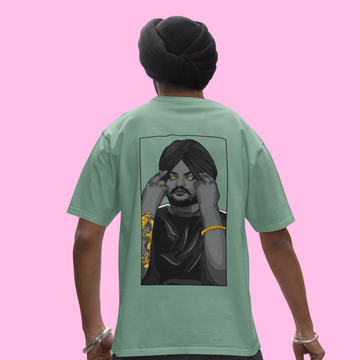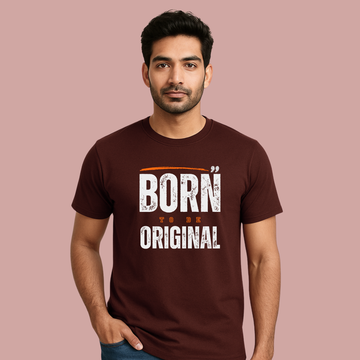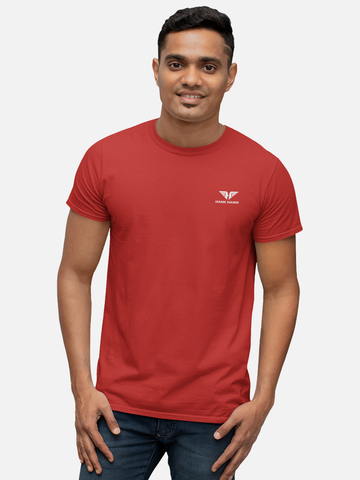Streetwear fashion has become a global phenomenon, captivating the attention of fashion enthusiasts, celebrities, and everyday individuals alike. Originating from the streets, it blends influences from various subcultures like skateboarding, hip-hop, and punk, creating a unique style that defies traditional fashion norms. But streetwear is more than just a style—it's a cultural movement, a statement of individuality, and a reflection of social and political consciousness. In this blog post, we’ll dive deep into what streetwear fashion is, its origins, and why it’s much more than just a fashion statement.
1. The Origins of Streetwear Fashion
Streetwear fashion traces its roots back to the late 1970s and early 1980s, primarily in urban environments like New York City and Los Angeles. It was born from the convergence of several subcultures, including skateboarding, punk, and hip-hop, each contributing its unique elements to what would become streetwear.
The Skateboarding Influence
Skateboarding culture played a crucial role in shaping streetwear. Skateboarders needed durable, comfortable clothing that allowed freedom of movement, leading to the popularity of loose-fitting jeans, graphic tees, and sneakers. Brands like Vans and Thrasher became synonymous with skate culture and, by extension, streetwear.
The Hip-Hop Connection
Hip-hop culture also left an indelible mark on streetwear. Artists and fans alike adopted bold, oversized clothing, often adorned with graphic designs and logos. Brands like Adidas, Nike, and later on, Supreme, became iconic within the hip-hop community, symbolizing both style and status.
The Punk Rock Influence
Punk rock added a rebellious edge to streetwear. The DIY ethos of punk culture—where individuals would customize their own clothing with patches, pins, and hand-drawn designs—resonated with the streetwear movement. This focus on individuality and anti-establishment sentiments became a core tenet of streetwear fashion.
2. What Defines Streetwear Fashion?
Streetwear fashion is characterized by a few key elements that set it apart from other styles. Understanding these components helps to grasp what makes streetwear so unique and appealing to such a broad audience.
The Importance of Comfort and Functionality
At its core, streetwear is about comfort and practicality. Loose-fitting clothes, sneakers, and hoodies are staples of the style, offering ease of movement and a relaxed, laid-back vibe. This emphasis on comfort has made streetwear accessible to a wide range of people, regardless of age or background.
Bold Graphics and Logos
Graphic designs and prominent logos are another defining feature of streetwear. Whether it’s a T-shirt with a bold graphic print or a hoodie emblazoned with a brand’s logo, these elements serve as a form of self-expression. They allow wearers to showcase their affiliations, beliefs, and identity through their clothing.
The Influence of Limited-Edition Drops
Exclusivity is a significant factor in streetwear fashion. Limited-edition releases, often referred to as “drops,” create a sense of urgency and desire among consumers. This model has been popularized by brands like Supreme, where scarcity and demand drive the value of the products.
The Mix of High and Low Fashion
Streetwear blurs the lines between high fashion and everyday clothing. It’s not uncommon to see a mix of luxury items paired with affordable pieces, creating a look that is both accessible and aspirational. This blend of high and low fashion allows for a unique expression of personal style.
3. The Global Influence of Streetwear
Streetwear has transcended its origins to become a global phenomenon, influencing fashion trends across the world. Its impact can be seen in various aspects of popular culture, from music and art to sports and social media.
Streetwear in Music and Pop Culture
Musicians, particularly in the hip-hop genre, have been instrumental in popularizing streetwear. Artists like Kanye West, Pharrell Williams, and A$AP Rocky have not only worn streetwear but have also collaborated with major brands to create their own lines, further blurring the lines between fashion, music, and culture.
The Role of Social Media in Streetwear’s Rise
Social media platforms like Instagram and TikTok have played a crucial role in the dissemination of streetwear culture. Influencers and fashion enthusiasts share their outfits, often incorporating streetwear elements, which in turn inspires others to adopt the style. The viral nature of social media has allowed streetwear to reach a global audience rapidly.
Streetwear’s Impact on Traditional Fashion Houses
Even traditional luxury fashion houses have taken notice of streetwear’s influence. Brands like Louis Vuitton, Gucci, and Balenciaga have incorporated streetwear elements into their collections, creating a fusion of high fashion and street style. This collaboration between luxury brands and streetwear has further solidified streetwear’s place in the fashion industry.
4. Why Streetwear is More Than Just a Fashion Statement
While streetwear is undoubtedly a fashion trend, it is also a powerful medium for self-expression, social commentary, and cultural identity. For many, streetwear is a way to communicate their beliefs, affiliations, and individuality.
Streetwear as a Form of Self-Expression
Streetwear allows individuals to express themselves in a way that is both personal and public. Whether through bold graphics, unique designs, or customized pieces, streetwear serves as a canvas for self-expression. It allows wearers to showcase their personality, interests, and even their stance on social issues.
The Role of Streetwear in Social Commentary
Streetwear has often been used as a tool for social commentary. Many brands and designers use their platforms to address social and political issues, creating clothing that carries a message. For example, the collaboration between Supreme and the Black Lives Matter movement brought attention to issues of racial inequality and police brutality.
Streetwear and Cultural Identity
Streetwear also plays a significant role in cultural identity. For many, wearing streetwear is a way to connect with a particular community or subculture. It’s a way to signal membership in a group, whether it’s skateboarders, hip-hop fans, or sneakerheads. This sense of belonging and identity is a crucial aspect of streetwear’s appeal.
The Future of Streetwear as a Cultural Movement
As streetwear continues to evolve, its influence extends beyond fashion. It has become a cultural movement that reflects the values and attitudes of a generation. The future of streetwear is likely to see even greater integration of social and political messages, making it a powerful tool for change and expression.
Conclusion
Streetwear fashion is far more than just a trend; it’s a reflection of cultural movements, social issues, and personal identity. From its origins in skateboarding and hip-hop culture to its global influence today, streetwear has grown into a powerful form of self-expression and social commentary. As it continues to evolve, streetwear will remain a significant force in the fashion world, embodying the values and beliefs of those who wear it.


















